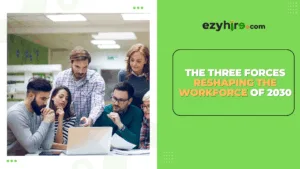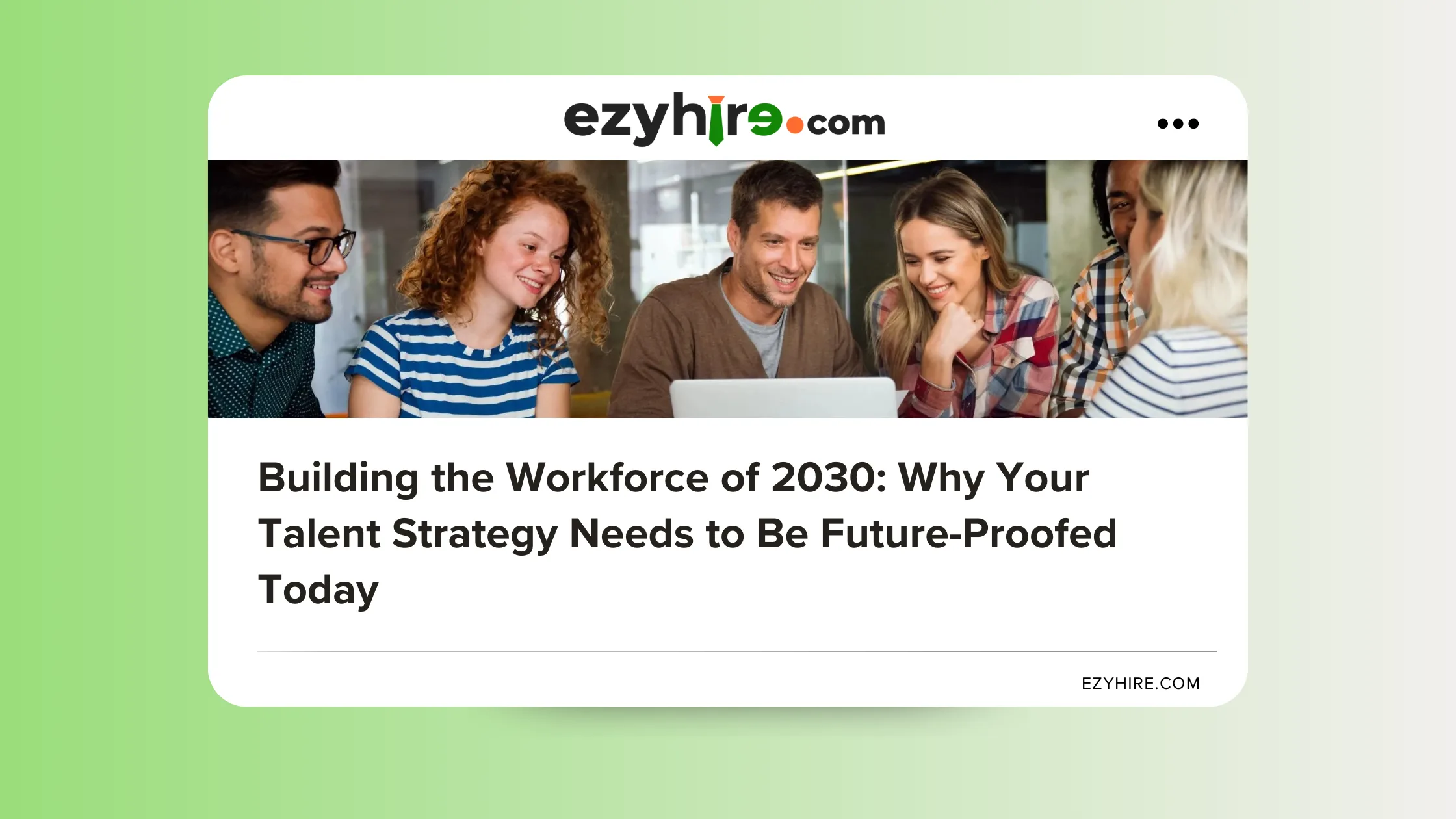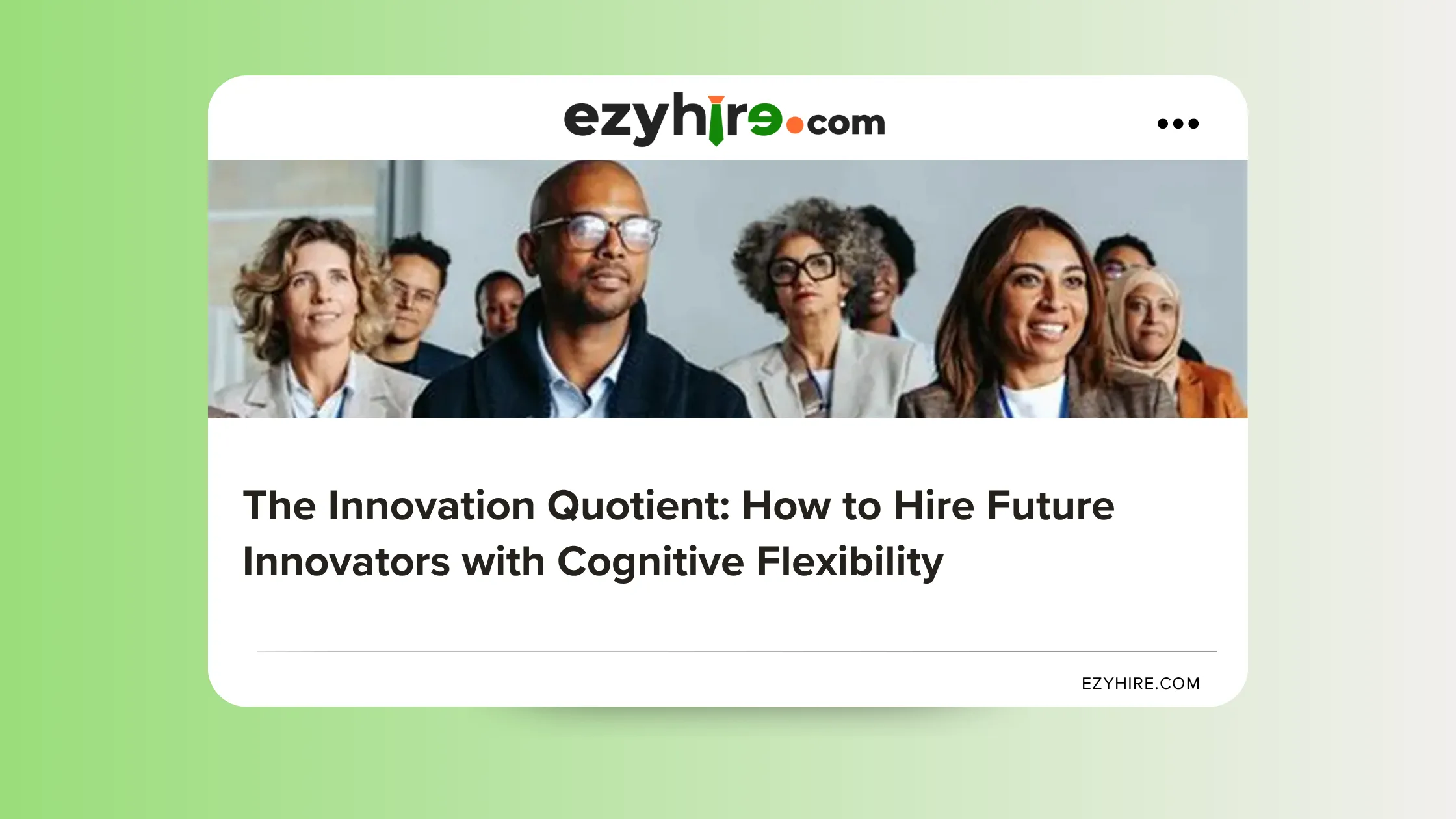Introduction: The Urgent Warning for Business Leaders
The strategies that built today’s successful companies will not sustain them through the end of this decade. We are no longer approaching a gradual evolution in the world of work. We are living through a violent restructuring of the very foundations of talent, hiring, and organizational resilience.
The assumptions that guided human resources and business strategy for generations—the authority of the resume, the centrality of the physical office, and the stability of job roles—are collapsing before our eyes.
Companies still relying on this outdated playbook are building brittle organizations. They are optimized for a world that no longer exists. They are hiring for static job descriptions even as 44 percent of a worker’s core skills are predicted to be disrupted within five years. They are competing for local talent while ignoring the borderless reality of today’s workforce. They are using artificial intelligence as a productivity enhancer while failing to grasp its role as a cognitive collaborator that will redefine human capability itself.
To survive and thrive in 2030, businesses must do more than update their talent strategy. They must dismantle the old system and rebuild it on a foundation of adaptability, trust, and intelligence. They must stop hiring only for today’s roles and start investing in long-term resilience. They must stop treating employees as static resources and begin architecting a future-proof workforce.
The Three Forces Reshaping the Workforce of 2030

The workforce of the next decade is being shaped by three massive, interconnected forces. Every organization must understand and adapt to these shifts or risk being left behind.
Shift 1: The Obsolescence of the Job Description
The rise of the skills-based economy
For decades, the job description was the cornerstone of hiring. It offered a list of duties and qualifications, and companies relied on it to match resumes to roles. That model is collapsing.
According to the World Economic Forum, technological change will create 170 million new jobs by 2030 while simultaneously displacing 92 million others. In this environment, the idea of a static role with a fixed set of responsibilities is outdated and dangerous.
The new paradigm is the skills-based economy. A person’s value is no longer defined by past job titles or university credentials. It is defined by their portfolio of verifiable skills and, even more importantly, by their ability to continuously acquire new ones.
Companies that persist in filtering candidates through rigid credential requirements are not just narrowing their hiring pool. They are actively excluding vast numbers of high-potential individuals who could drive growth. On the other hand, adopting a skills-first approach can expand the available talent pool by a factor of six.
The future belongs to organizations that can identify, verify, and deploy skills with precision. Resumes will fade. Skills intelligence will reign.
Shift 2: The Dissolution of the Office
The rise of the borderless workforce
The office is no longer the gravitational center of work. It has become just one node in a global, distributed network. By 2030, the number of digital jobs that can be performed remotely from anywhere is projected to surge to 92 million.
This dissolution of physical boundaries offers both opportunity and risk. On one hand, it allows companies to hire the best talent on the planet, whether they are based in Berlin, Bangalore, or São Paulo. On the other, it introduces immense complexity:
- How do you compliantly hire and pay someone in a country where you have no legal presence?
- How do you verify the identity of someone you may never meet in person?
- How do you ensure security and protect intellectual property in a distributed network of workers?
Companies that build the infrastructure for trust, compliance, and scalability will be positioned to lead. Those that fail will be locked out of the global talent market, competing for an increasingly limited pool of local candidates.
The borderless workforce is not a temporary adjustment. It is the new operating system of global business.
Shift 3: The Augmentation of the Mind
The rise of human-AI collaboration
The debate about whether AI will replace jobs misses the point. The more profound truth is that AI is augmenting human cognition itself. It is automating routine tasks and analysis, enabling humans to focus on higher-order capabilities such as creative thinking, strategic decision-making, and emotional intelligence.
This shift does not eliminate the skill gap. It amplifies it. The most valuable workers of 2030 will not simply be technically proficient. They will be those with the cognitive agility to learn quickly, adapt to new tools, and collaborate seamlessly with AI systems to solve complex, cross-disciplinary challenges.
Organizations that continue training for yesterday’s technical skills are preparing their workforce for obsolescence. Those that invest in adaptability, learning agility, and collaboration with AI will be the ones that thrive.
The Blueprint: Architecting the Workforce of 2030 with Ezyhire
Future-proofing your workforce requires deliberate design. It is not about marginal improvements to outdated processes. It is about creating a talent operating system that allows you to adapt continuously, hire intelligently, and scale globally.
Ezyhire provides this operating system through three foundational pillars: predictive intelligence, borderless operations, and integrated agility.
Pillar 1: The Foundation – Predictive Intelligence
Ezyhire’s AI-powered assessments
To succeed in 2030, you must hire for potential, not just past performance. Ezyhire’s AI-powered assessments provide this foundation by offering predictive, objective insights into a candidate’s capabilities.
- Map What Matters: Access a diverse library of assessments that measure core abilities such as problem-solving, critical thinking, and learning agility—the strongest predictors of success in a dynamic environment.
- Eliminate Bias: AI-driven scoring ensures fair, consistent, and data-backed insights, removing unconscious bias from the hiring process and surfacing talent from all backgrounds.
- Simulate Reality: Instead of abstract questions, Ezyhire assessments use real-world challenges to evaluate candidates in practical, high-pressure contexts.
The result is more than better hires. You build a living dataset of your organization’s human capital, a cognitive blueprint that can be deployed strategically as new challenges arise.
Pillar 2: The Framework – Borderless Operations
Ezyhire’s Verification and Employer of Record (EOR) services
A future-proof workforce is a global workforce. Ezyhire provides the compliance and trust framework to make this possible.
- Instant Trust: Ezyhire’s automated Photo ID Verification is the new digital handshake. With AI-driven authentication and advanced liveness detection, it confirms identities with forensic precision across 130+ countries, blocking fraud and building trust from day one.
- Expand Globally with Ease: Through Ezyhire’s Employer of Record (EOR) services, companies can compliantly hire in more than 130 countries. Payroll, taxes, benefits, and compliance are all handled, allowing you to onboard top global talent in days instead of months.
Instead of being limited by geography or slowed down by legal complexities, your workforce can scale instantly and securely anywhere opportunity emerges.
Pillar 3: The Engine – Integrated Agility
The unified Ezyhire platform
The true advantage of Ezyhire is not found in its individual features but in their integration. It is a single, unified platform where assessments, verification, background checks, and EOR services are fully connected.
This integration enables a seamless flow:
- Identify potential with predictive assessments.
- Verify trust with background checks and Photo ID authentication.
- Deploy talent globally with EOR services.
This integrated agility transforms the talent function from a reactive support role into a strategic driver of business growth. It allows organizations to adapt to market shifts, deploy skills against new challenges, and scale operations with confidence.
The Mandate: Build for Tomorrow, Starting Today
The workforce of 2030 is not a distant vision. It is already being built right now. The tectonic shifts of the skills-based economy, the borderless workforce, and human-AI collaboration are already reshaping the playing field.
Companies that cling to outdated playbooks will find themselves falling behind, unable to attract or retain the talent needed to compete. But companies that act decisively today can not only survive but dominate in the decade ahead.
Future-proofing your workforce is no longer optional. It is the strategic mandate of this era.
Conclusion: Your Blueprint for the Workforce of 2030
The strategies of yesterday are obsolete. The job description is dead. The office has dissolved. AI is no longer a tool but a collaborator. To thrive in this reality, organizations must stop reacting and start architecting.
With Ezyhire, you gain more than a hiring solution. You gain a workforce operating system designed for the future: predictive intelligence, global compliance infrastructure, and integrated agility. Together, these pillars empower you to build a workforce that is resilient, adaptable, and borderless.
Your competitors are already preparing. The question is whether you will lead or lag behind.
Take Action Now
The blueprint for the workforce of 2030 is ready. The only thing missing is your decision to act.
Start your free trial today and see how Ezyhire transforms hiring into a strategic advantage.
Or book a free demo with our team and learn how we can help you build a resilient, borderless, and future-proof workforce.
The future of work will not wait. Begin building it today.



